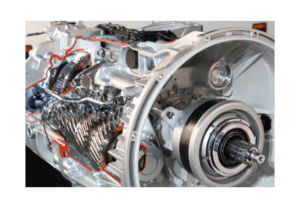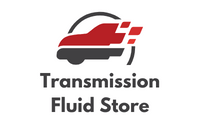An automatic transmission is a type of gearbox that is widely used in modern vehicles. It is designed to change the gear ratios automatically as the vehicle moves, without any input from the driver. The transmission is an essential component of a vehicle’s drivetrain, and it is responsible for transmitting power from the engine to the wheels. Many people wonder does automatic transmission have a clutch, and this article will explore that question in detail.
This article will discuss the workings of automatic transmissions and whether or not they contain a clutch. We will look at the different types of automatic transmissions and how they operate. We will also examine the differences between automatic and manual transmissions and the advantages and disadvantages of each. By the end of this article, readers will have a clear understanding of whether or not automatic transmissions have a clutch, and how they differ from manual transmission cars.

Contents
What is a clutch?
Before we dive into whether an automatic transmission has a clutch or not, let’s first define what a clutch is. A clutch is a mechanical device that connects and disconnects two rotating shafts. In the automotive industry, clutches are commonly used in manual transmissions to transfer power from the engine to the wheels.
In a manual transmission, the clutch is used to transfer power from the engine to the gearbox, and it enables the driver to change gears smoothly. There are several types of clutches used in the automotive industry, including mechanical clutches, hydraulic clutches, and electromagnetic clutches.
Friction clutches are the most common type used in manual transmissions because they’re simple and reliable. The clutch allows the driver to disengage the engine from the transmission, enabling the driver to shift gears smoothly. A friction clutch works by pressing two surfaces together, one fixed to the transmission input shaft and the other to the engine’s output shaft.
The clutch disc, which is sandwiched between these two surfaces, transfers the engine’s power to the transmission. The clutch disc contains a series of friction materials, similar to brake pads, that wear over time due to heat and friction. In addition to manual transmissions, friction clutches are also used in some automatic transmissions, particularly those with manual shift modes.
The importance of the clutch in manual transmissions cannot be overstated. It allows drivers to smoothly engage and disengage gears while driving, which is crucial for maintaining control over the vehicle.
Does an automatic transmission have a clutch?
Now that we’ve defined what a clutch is and its importance in manual transmissions let’s explore whether an automatic transmission car has one as well.
The short answer is yes; an automatic transmission does have a clutch. However, it’s not like the traditional friction clutch found in manual transmissions. In an automatic transmission system, there isn’t just one single clutch like there is in a manual transmission system. Instead, there is a torque converter, multiple clutches, and bands covered by transmission fluid that work together to change gears automatically.
Automatic transmissions use a complex system of gears and fluid to change gears automatically in a vehicle, eliminating the need for the driver to shift gears manually. Unlike manual transmission, automatic cars do not have a clutch pedal, which prompts the question of whether or not it has a clutch. In an automatic transmission, the clutch system is replaced by a torque converter.
Components of an Automatic Transmission
To understand how these multiple clutches work together in an automatic transmission system let us take a closer look at some of its components:
A) Torque Converter- This component replaces the conventional frictional contact plate of conventional clutches with fluid coupling through which power can be transmitted between the engine crankshaft and the input shaft of the gearbox without any physical contact between them.
B) Planetary Gear Set- This gear set consists of sun gear (central), planetary gear (surrounding), carrier (holding planetary gears), ring gear(outer). The output shaft receives torque from this gear set which determines speed ratios based on its arrangement.
C) Hydraulic System- All changing operations inside Automatic Transmission require pressurized hydraulic fluid for their functioning which includes lubrication as well as cooling purposes too.
D) Valve Body & Control Solenoids- These components help regulate pressure levels throughout various circuits within Automatic Transmission by opening/closing different valves based on electronic signals received from sensors placed all around it.
E) Clutch Packs & Bands – These are multiple sets of circular plates with friction material on either side arranged alternatively with steel plates having teeth on either side forming a sandwich structure. These packs/bands are engaged/disengaged using hydraulic pressure depending upon current driving conditions such as speed, load, etc thereby controlling torque flow between different components inside an automatic transmission.
FAQ’s
Does an automatic transmission have a clutch?
Yes, automatic transmissions do have clutches, but they are different from the ones found in manual transmissions. Instead of one clutch that the driver manually operates, automatic transmissions use a set of clutches for different gears, which are operated automatically without the need for driver intervention. This set of clutches works together to manage the vehicle’s shifting.
How does the clutch in an automatic transmission work?
In an automatic transmission, the clutch’s role is performed by a torque converter. The torque converter uses hydraulic fluid to transfer power from the engine to the transmission. When you accelerate, the fluid inside the torque converter creates a pressure that engages the appropriate gear based on the vehicle’s speed and load.
Do automatic transmissions have a clutch pedal?
No, vehicles with automatic transmissions do not have a clutch pedal. The clutch mechanism in an automatic transmission is controlled internally by the transmission itself, meaning there’s no need for the driver to manually engage or disengage the clutch as in a manual transmission.
Can the clutch in an automatic transmission wear out?
Yes, the components in an automatic transmission, including the clutches, can wear out over time. However, under normal driving conditions, an automatic transmission’s clutches should last a very long time. Regular maintenance, including changing the transmission fluid according to the manufacturer’s recommendations, can help prolong the life of these components.
How do I know if the clutch in my automatic transmission is failing?
Symptoms of a failing clutch in an automatic transmission can include rough or delayed shifting, a slipping transmission (the engine revs but the car doesn’t accelerate as it should), a transmission warning light on your dashboard, or even a burning smell. If you notice any of these symptoms, it’s important to get your vehicle checked by a professional mechanic as soon as possible.
Conclusion – Does Automatic Transmission Have a Clutch
While many people assume that automatic transmission cars don’t have clutches or a clutch pedal at all, they do actually have multiple ones working together to change gears automatically without requiring any input from the driver.
Understanding how these multiple components work together can help you appreciate just how complex and sophisticated modern-day automatic transmissions really are. Whether you prefer driving with an automatic or manual transmission car both come with their own pros/cons but knowing about both will definitely help you make informed decisions when buying your next vehicle.

2 thoughts on “Does Automatic Transmission Have a Clutch – Discover 4 Components”
Comments are closed.